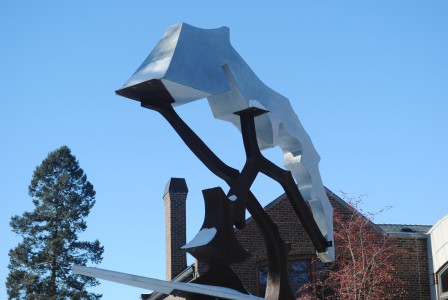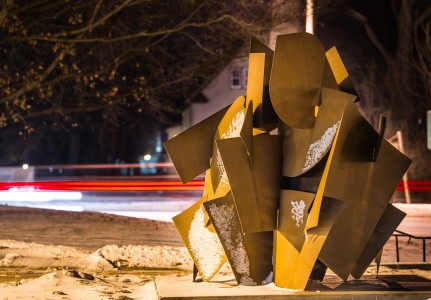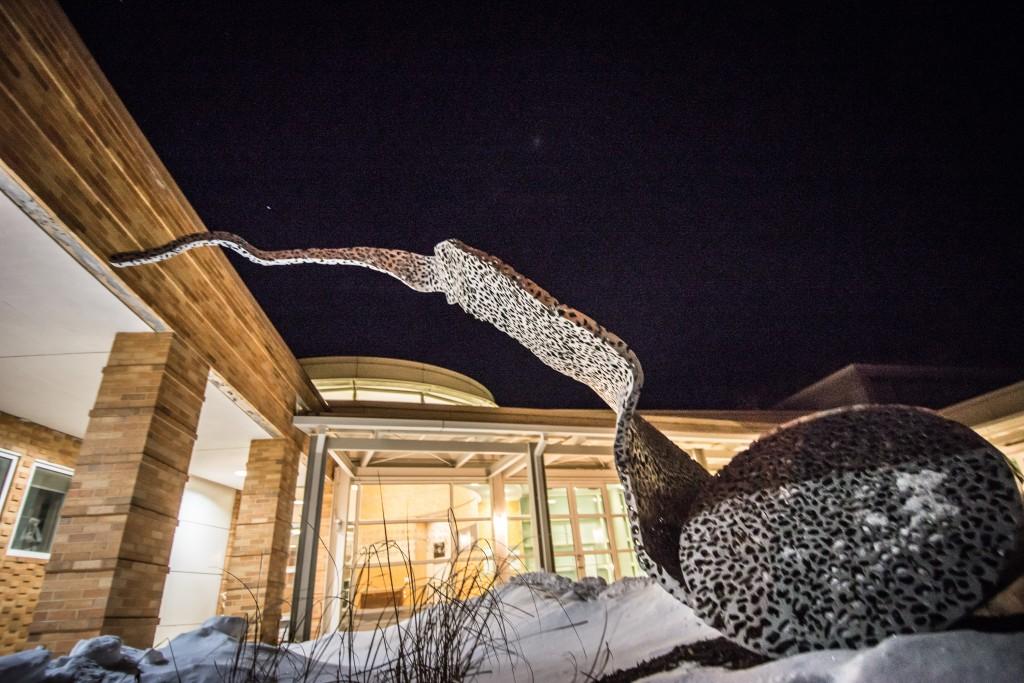Visible throughout campus, especially centered around Bucksbaum, are works of art that are important additions to the aesthetic of the College. The story behind how each sculpture ended up on campus is different. Sometimes the College wanted to work with a specific artist, sometimes artwork was bought in honor of someone and sometimes a piece was donated to the College. Faulconer Gallery has endowed money used to acquire works of art. It is mostly used for works on paper, however, because they are more cost-efficient, portable and used by many classes.
“It seems that we used to use collection money to buy art for specific locations more often. … There hasn’t been a lot of clamor for it recently,” said Faulconer Gallery director Lesley Wright.
Much planning goes into the acquisition of a new sculpture. According to Wright, it is also important that works are made of material that is feasible to care for and everything is run past Facilities Management and faculty who will be working in buildings surrounding the site of the work.
“Siting public sculpture is always one of the biggest challenges. In fact, some people will refer to some public sculpture as ‘plop art.’ We’ve tried very hard to place things in locations that make some coherent sense,” Wright said.
More information about sculptures on campus is available through the online Campus Sculpture Tour at http://web.grinnell.edu/faulconergallery/CampusArt/index.htm.

Located between Goodnow Hall and Bucksbaum, “Untitled” by Robert Craig, was a site-specific commissioned work that is strongly inspired by its surroundings. Craig is an associate professor of art at Drake University. His aunt and uncle are Merle Zirkle, Art, and Louis Zirkle, former sculpture professor who created the untitled tall, steel sculpture which stands in the middle of the academic quad on campus, between the bookstore and Noyce.

“Babe’s Turn” by Ingrid Lilligren, an associate professor of art and design at Iowa State University, stands in the courtyard outside Bucksbaum in honor of B.G. Voertman ’67, who was an assistant professor emerita of theatre. Milton Severe, Director of Exhibition Design for Faulconer Gallery, had a close friendship with Voertman and was put in charge of commissioning a work in her memory. The form of the piece is intended to reflect the grace that Voertman had as a lifelong dancer, and the bright colors represent the energy that she brought to the College.

This piece is entitled “Morphosis,” and was created by Rico Eastman. It is made of 16 sheets of metal which interlock to reflect the structure of notes and rests in musical compositions. It first arrived on campus in September of 1999 as part of an exhibition focusing on structures, entitled “Restructure,” for the dedication of what is now the Bucksbaum Center for the Arts. Wright came across the piece in an art fair at Navy Pier in Chicago. Because of the size of the sculpture and the size of the doors to what was then called the Grinnell College Art Gallery—now Faulconer Gallery—“Morphosis” could not fit into the gallery and was mounted in the rotunda. Mr. Vernon Faulconer came to the exhibition and really liked the sculpture. He decided to buy it for the College to commemorate the dedication. Because its location in the rotunda interfered with using the rotunda for many other activities, it was moved to its current street-side site outside Bucksbaum.
“[This is] so that you look up at the building and see a work of art, and it gives some signification that this is an arts building,” Wright said.

“Glial Axon” by Erik Levine was part of an exhibition that Wright and Associate Director of the Art Gallery Dan Strong curated in 2001 with pieces from a group of different New York artists. Levine was making wooden works at the time, but was experimenting with a process involving porous aluminum. He was excited to take one of his wooden works and use this new process to create a piece to be sited at the College.
“We were in the process of trying to figure out some ways to get more art around the building, because they built this fine arts building and there was nothing to signify that it was art. In fact, at the time we did not have any art hanging in the building … except for the pot off the rotunda,” Wright said.
The form of the sculpture is not intended to reflect any specific object or concept, but with its current location, many students see it imitating the shape of a musical note.





























































